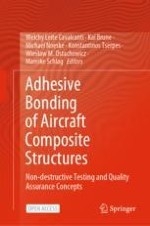Open Access 2021 | Open Access | Book

Adhesive Bonding of Aircraft Composite Structures
Non-destructive Testing and Quality Assurance Concepts
Editors: Dr. Welchy Leite Cavalcanti, Kai Brune, Dr. Michael Noeske, Prof. Konstantinos Tserpes, Prof. Dr. Wiesław M. Ostachowicz, Mareike Schlag
Publisher: Springer International Publishing